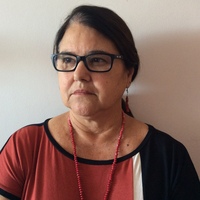
S. Junges
Related Authors
Jorge Laux
CPRM-Brazil
Reinhardt Fuck
Universidade de Brasília - UnB
Claudinei Oliveira
Universidade de Brasília - UnB
Diogo De Sordi
Universidade de Brasília - UnB
Nilson Botelho
Universidade de Brasília - UnB
InterestsView All (6)



Uploads
Papers by S. Junges
Nd isotopic signatures egraineddetritalsedimentsoftheseveralrockunitsofthebeltwereinvestigatedinordertoassess:i)the nature and average crustal residence ages of the source areas, and ii) the tectonic signi®cance of the different sedimentary units in respect to the evolution of the BrasÂõlia Belt.
TDM model ages of the ca. 1.2±0.9 Ga old Paranoa and Canastra rhythmites, shales and phyllites vary within the interval between 1.9 and 2.3 Ga, suggesting relatively uniform Paleoproterozoic continental sources within the SaÄo Francisco continent. The sediments of the detritic/ carbonatic Vazante Group also display Paleoproterozoic model ages indicating, however, a distinct shift towards slightly younger TDM values 1.7±2.1 Ga). These three sequences are interpreted as the typical representatives of the passive margin sequence, with dominance of Paleoproterozoic sources.
The Ibia and Araxa groups show a bimodal distribution of model age values, with a set of samples displaying TDM values between 1.8 and 2.1 Ga similar to the passive margin sequence), and another set with younger model ages, between ca. 1.0 and 1.3 Ga. Younger sources such as those represented by the Neoproterozoic GoiaÂs Magmatic Arc 0.93±0.64 Ga) in the west, are required to explain the young model ages for these sediments. Immature sediments feldspathic micaschists) within the magmatic arc, in fact, have TDM model ages mostly between 1.0 and1.2Ga,indicatingthattheoriginalsedimentsrepresentproductsoferosionofthearcitself.Therefore,partoftherockunitsthathave been mapped as Araxa and Ibia groups can be deeper water equivalents of a passive margin sequence sediments with Paleoproterozoic model ages). However, another part has been clearly deposited under the in ̄uence of an island arc source, most probably in a back-arc basin.
The BambuÂõ Group sediments D0X8 Ga?Y at the top of the sequence, also indicate the presence of a young source. TDM model ages vary between ca. 1.4 and 1.9 Ga. However, the distribution pattern of TDM values is more uniform, being intermediate between the Neoproterozoic juvenile source and the Paleoproterozoic continental source area. The BambuÂõ Group is interpreted as a post-inversion sequence, with detrital sediments being mostly derived from erosion of a mountain range in the west, after accretion of the GoiaÂs Magmatic Arc.
Nd isotopic signatures egraineddetritalsedimentsoftheseveralrockunitsofthebeltwereinvestigatedinordertoassess:i)the nature and average crustal residence ages of the source areas, and ii) the tectonic signi®cance of the different sedimentary units in respect to the evolution of the BrasÂõlia Belt.
TDM model ages of the ca. 1.2±0.9 Ga old Paranoa and Canastra rhythmites, shales and phyllites vary within the interval between 1.9 and 2.3 Ga, suggesting relatively uniform Paleoproterozoic continental sources within the SaÄo Francisco continent. The sediments of the detritic/ carbonatic Vazante Group also display Paleoproterozoic model ages indicating, however, a distinct shift towards slightly younger TDM values 1.7±2.1 Ga). These three sequences are interpreted as the typical representatives of the passive margin sequence, with dominance of Paleoproterozoic sources.
The Ibia and Araxa groups show a bimodal distribution of model age values, with a set of samples displaying TDM values between 1.8 and 2.1 Ga similar to the passive margin sequence), and another set with younger model ages, between ca. 1.0 and 1.3 Ga. Younger sources such as those represented by the Neoproterozoic GoiaÂs Magmatic Arc 0.93±0.64 Ga) in the west, are required to explain the young model ages for these sediments. Immature sediments feldspathic micaschists) within the magmatic arc, in fact, have TDM model ages mostly between 1.0 and1.2Ga,indicatingthattheoriginalsedimentsrepresentproductsoferosionofthearcitself.Therefore,partoftherockunitsthathave been mapped as Araxa and Ibia groups can be deeper water equivalents of a passive margin sequence sediments with Paleoproterozoic model ages). However, another part has been clearly deposited under the in ̄uence of an island arc source, most probably in a back-arc basin.
The BambuÂõ Group sediments D0X8 Ga?Y at the top of the sequence, also indicate the presence of a young source. TDM model ages vary between ca. 1.4 and 1.9 Ga. However, the distribution pattern of TDM values is more uniform, being intermediate between the Neoproterozoic juvenile source and the Paleoproterozoic continental source area. The BambuÂõ Group is interpreted as a post-inversion sequence, with detrital sediments being mostly derived from erosion of a mountain range in the west, after accretion of the GoiaÂs Magmatic Arc.